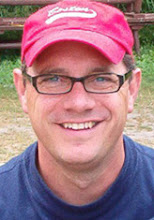 When one normally pictures wildlife conservation, protection of tigers, pandas and gorillas may come to mind. But what about alviniconcha, or “hairy snails”?
When one normally pictures wildlife conservation, protection of tigers, pandas and gorillas may come to mind. But what about alviniconcha, or “hairy snails”?Alvinicocha live near hydrothermal vents on the ocean floor, where temperatures can range from 300-400 C over the course of a few meters. Hot water flowing from the vents contains high levels of dissolved minerals, which precipitate out when exposed to cold sea floor temperatures. Some companies are seeking to mine these deposits, raising brand new environmental concerns: What kind of life exists at hydrothermal vents? And how would these organisms and population structures be affected by mining?
 Tom Schultz, Marine Lab professor and director of the Marine Conservation Molecular Facility, has been investigating these questions with his research team, comprised of Cindy Van Dover, Jens Carlsson, Andrew Thaler, Kevin Zelnio, Rebecca Jones and Pen Hsing.
Tom Schultz, Marine Lab professor and director of the Marine Conservation Molecular Facility, has been investigating these questions with his research team, comprised of Cindy Van Dover, Jens Carlsson, Andrew Thaler, Kevin Zelnio, Rebecca Jones and Pen Hsing.“Hydrothermal vents are teeming oases of life,” Schultz said at a Genomes@4 lecture last Wednesday, sponsored by the Duke Institute for Genome Sciences & Policy.
Far out of reach of sunlight, organisms living in and around hydrothermal vents rely on chemosynthesis (energy from chemicals) rather than photosynthesis (energy from sunlight). Hairy snails, shrimp, crabs, tubeworms and many many kinds of bacteria call this extreme environment home.
Shultz’ team collected water samples to determine the microbial water diversity and found an astonishing 18,000 species of bacteria-- and that’s a conservative estimate. “We probably got about half of what species were present,” Schultz said. “It’s amazing to me.”
There are some difficulties involved in sampling because, as Schultz put it, “you can’t just go in your backyard to collect data.”
Schultz’ team worked with Nautilus Minerals, Inc. to gather the data. Complex robotics are used to collect samples from the sea floor. According to Schultz, the costs of operating underwater are made up for by a higher concentration of minerals: 10x higher than typical land deposits.
 From the data, Schultz was able to conclude that populations living on or in hydrothermal vents do not seem small or fragmented (and thus vulnerable to extinction if mining were to occur). Furthermore, hydrothermal vents are prone to sudden eruption events that would disrupt the population as much as mining; organisms living near vents must necessarily be adaptable to perturbation.
From the data, Schultz was able to conclude that populations living on or in hydrothermal vents do not seem small or fragmented (and thus vulnerable to extinction if mining were to occur). Furthermore, hydrothermal vents are prone to sudden eruption events that would disrupt the population as much as mining; organisms living near vents must necessarily be adaptable to perturbation.But one major concern is the threat to biodiversity and the loss of undiscovered species. Schultz’ team happened upon several new species during the course of their research, and untold more remain undiscovered. Hopefully future research will reveal some of the secrets kept by the deep blue sea.

